
How to Use 120V 5-15P Panel Outlet: Examples, Pinouts, and Specs
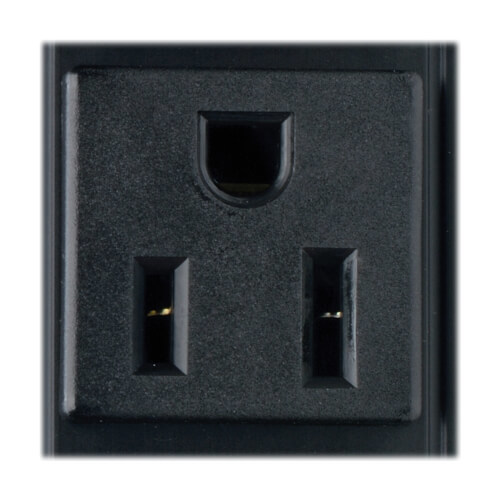
 Design with 120V 5-15P Panel Outlet in Cirkit Designer
Design with 120V 5-15P Panel Outlet in Cirkit Designer120V 5-15P Panel Outlet Documentation
1. Introduction
The 120V 5-15P Panel Outlet is a standard electrical outlet designed to deliver 120V AC power. It features a 5-15P configuration, which includes two flat parallel blades for line and neutral connections, along with a grounding pin for safety. This outlet is widely used in residential, commercial, and industrial applications to power a variety of devices, such as appliances, tools, and electronic equipment.
Common Applications:
- Powering household appliances (e.g., lamps, fans, and kitchen devices)
- Providing power to office equipment (e.g., computers, printers, and monitors)
- Industrial and workshop use for tools and machinery
- Integration into custom electrical panels or enclosures
2. Technical Specifications
The following table outlines the key technical details of the 120V 5-15P Panel Outlet:
| Parameter | Specification |
|---|---|
| Voltage Rating | 120V AC |
| Current Rating | 15A |
| Power Rating | 1800W (at 120V) |
| Configuration | NEMA 5-15P |
| Number of Outlets | 1 |
| Material | Thermoplastic or Nylon |
| Mounting Style | Panel Mount |
| Grounding | Yes (Ground Pin Included) |
| Operating Temperature | -20°C to 60°C |
| Dimensions | Varies by manufacturer (e.g., 2"x1") |
Pin Configuration and Descriptions
| Pin Name | Description |
|---|---|
| Line (Hot) | Supplies the 120V AC power to the connected device. |
| Neutral | Returns current to complete the circuit. |
| Ground | Provides a safety path for fault currents. |
3. Usage Instructions
How to Use the 120V 5-15P Panel Outlet in a Circuit
Mounting the Outlet:
- Secure the outlet into a panel or enclosure using screws or clips, ensuring it is firmly attached.
- Ensure the outlet is properly aligned for easy access to the plug.
Wiring the Outlet:
- Connect the Line (Hot) wire to the brass terminal.
- Connect the Neutral wire to the silver terminal.
- Connect the Ground wire to the green terminal.
- Use appropriate wire gauges (e.g., 14 AWG for 15A circuits) and ensure all connections are tight.
Testing the Outlet:
- After wiring, use a multimeter or outlet tester to verify proper connections.
- Check for continuity between the ground pin and the grounding system.
Powering Devices:
- Plug in compatible devices with a 5-15P plug configuration.
- Ensure the total load does not exceed the outlet's 15A current rating.
Important Considerations and Best Practices:
- Always turn off power at the circuit breaker before wiring or servicing the outlet.
- Use a GFCI (Ground Fault Circuit Interrupter) outlet in wet or damp locations for added safety.
- Avoid overloading the outlet by connecting devices that exceed the 15A or 1800W rating.
- Ensure proper grounding to prevent electrical hazards.
4. Example Application with Arduino UNO
While the 120V 5-15P Panel Outlet is not directly connected to an Arduino UNO, it can be used in projects where the Arduino controls a relay to switch AC devices on and off. Below is an example of how to use the outlet with a relay module and an Arduino UNO.
Circuit Diagram
- Components Required:
- Arduino UNO
- 5V Relay Module
- 120V 5-15P Panel Outlet
- AC Load (e.g., a lamp)
- Jumper Wires
- External Power Supply (for the relay)
Arduino Code Example
/*
Example: Controlling a 120V Outlet with Arduino and Relay
This code demonstrates how to use an Arduino UNO to control a relay module
that switches a 120V 5-15P Panel Outlet on and off.
WARNING: Ensure proper safety precautions when working with high voltage.
Only qualified individuals should handle AC wiring.
*/
const int relayPin = 7; // Pin connected to the relay module
void setup() {
pinMode(relayPin, OUTPUT); // Set relay pin as output
digitalWrite(relayPin, LOW); // Ensure relay is off at startup
}
void loop() {
// Turn the outlet ON
digitalWrite(relayPin, HIGH); // Activate relay
delay(5000); // Keep outlet ON for 5 seconds
// Turn the outlet OFF
digitalWrite(relayPin, LOW); // Deactivate relay
delay(5000); // Keep outlet OFF for 5 seconds
}
Safety Notes:
- Ensure the relay module is rated for 120V AC and can handle the current of the connected load.
- Use proper insulation and enclosures to prevent accidental contact with live wires.
- Test the circuit with a low-power load before connecting high-power devices.
5. Troubleshooting and FAQs
Common Issues and Solutions
| Issue | Possible Cause | Solution |
|---|---|---|
| Outlet does not provide power | Loose or incorrect wiring | Verify wiring connections and tighten. |
| Device trips circuit breaker | Overloaded circuit or short circuit | Reduce load or check for wiring faults. |
| Ground pin not connected properly | Faulty or missing ground connection | Ensure ground wire is securely connected. |
| Outlet feels warm during use | Excessive load or poor connections | Reduce load and check for loose wires. |
Frequently Asked Questions
Can I use this outlet for 240V devices?
- No, this outlet is designed for 120V AC only. Using it with 240V devices may cause damage or pose a safety hazard.
What wire gauge should I use for wiring this outlet?
- Use 14 AWG wire for 15A circuits. For longer runs, consult local electrical codes.
Can I install this outlet outdoors?
- Yes, but only if it is installed in a weatherproof enclosure and complies with local codes.
How do I test if the outlet is working?
- Use an outlet tester or multimeter to check for proper voltage and grounding.
6. Conclusion
The 120V 5-15P Panel Outlet is a versatile and reliable component for delivering AC power in a variety of applications. By following proper installation and safety practices, you can ensure safe and efficient operation. Whether you're powering household appliances or integrating the outlet into a custom project, this documentation provides the essential information needed for successful use.
Explore Projects Built with 120V 5-15P Panel Outlet
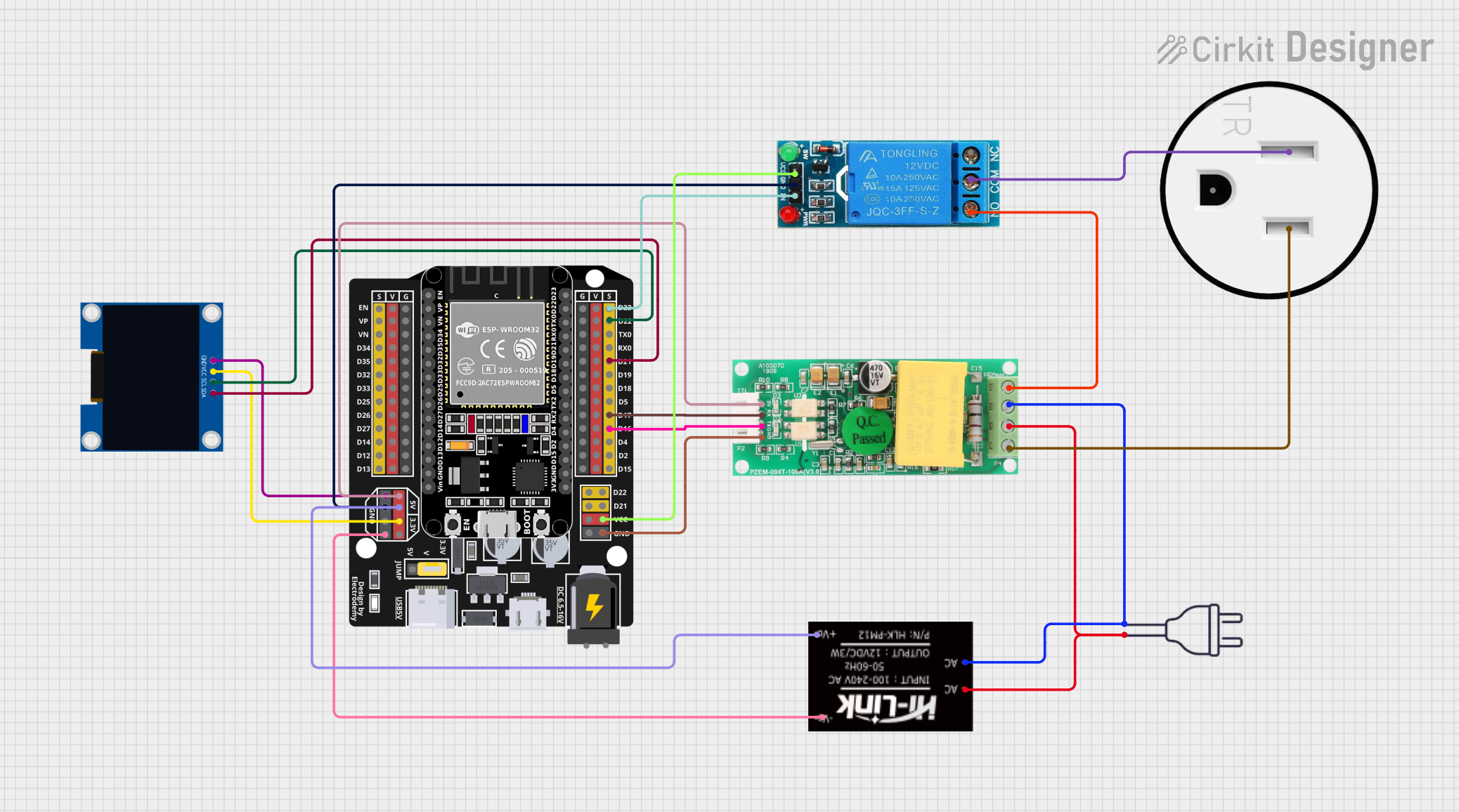
 Open Project in Cirkit Designer
Open Project in Cirkit Designer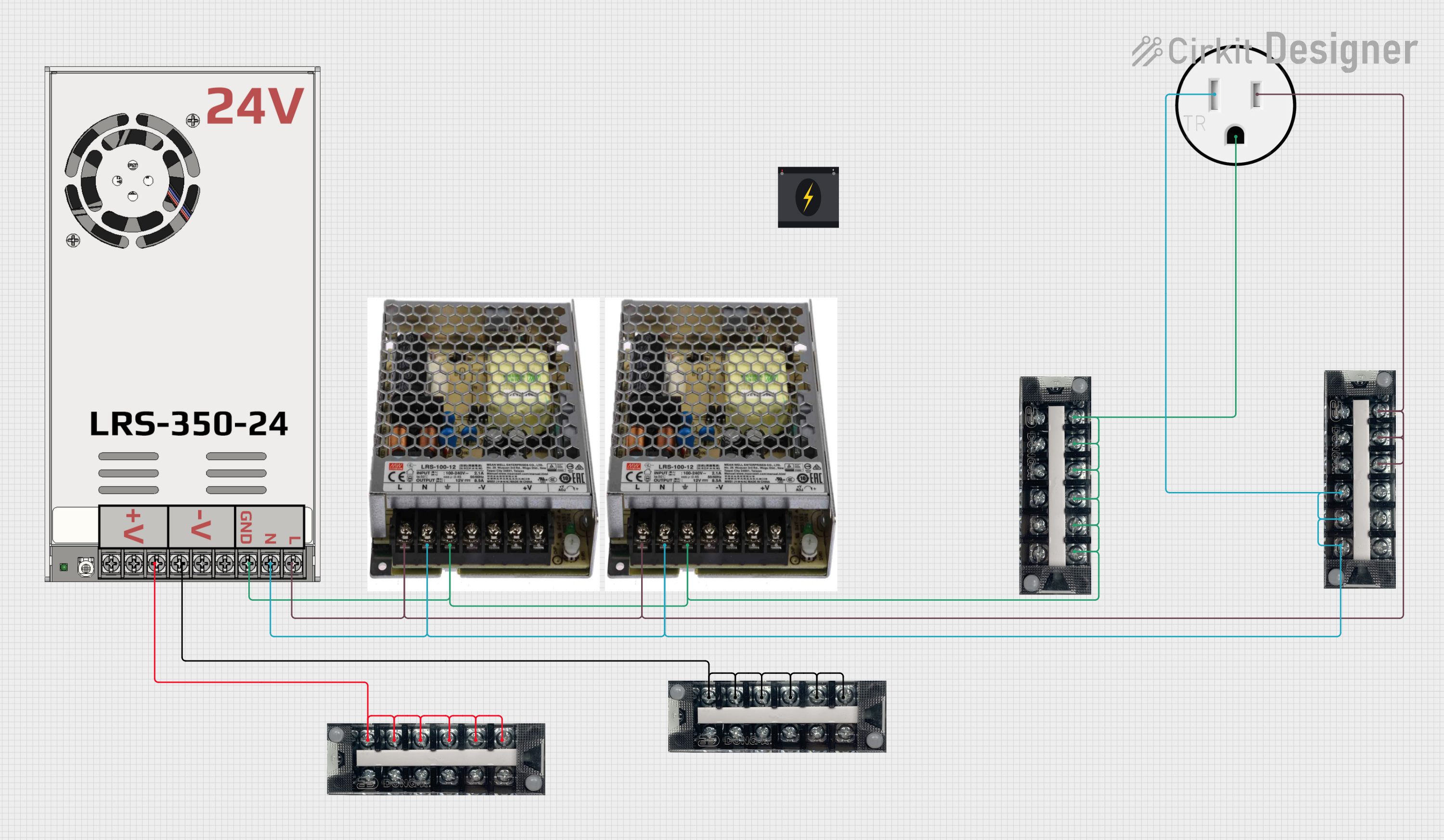
 Open Project in Cirkit Designer
Open Project in Cirkit Designer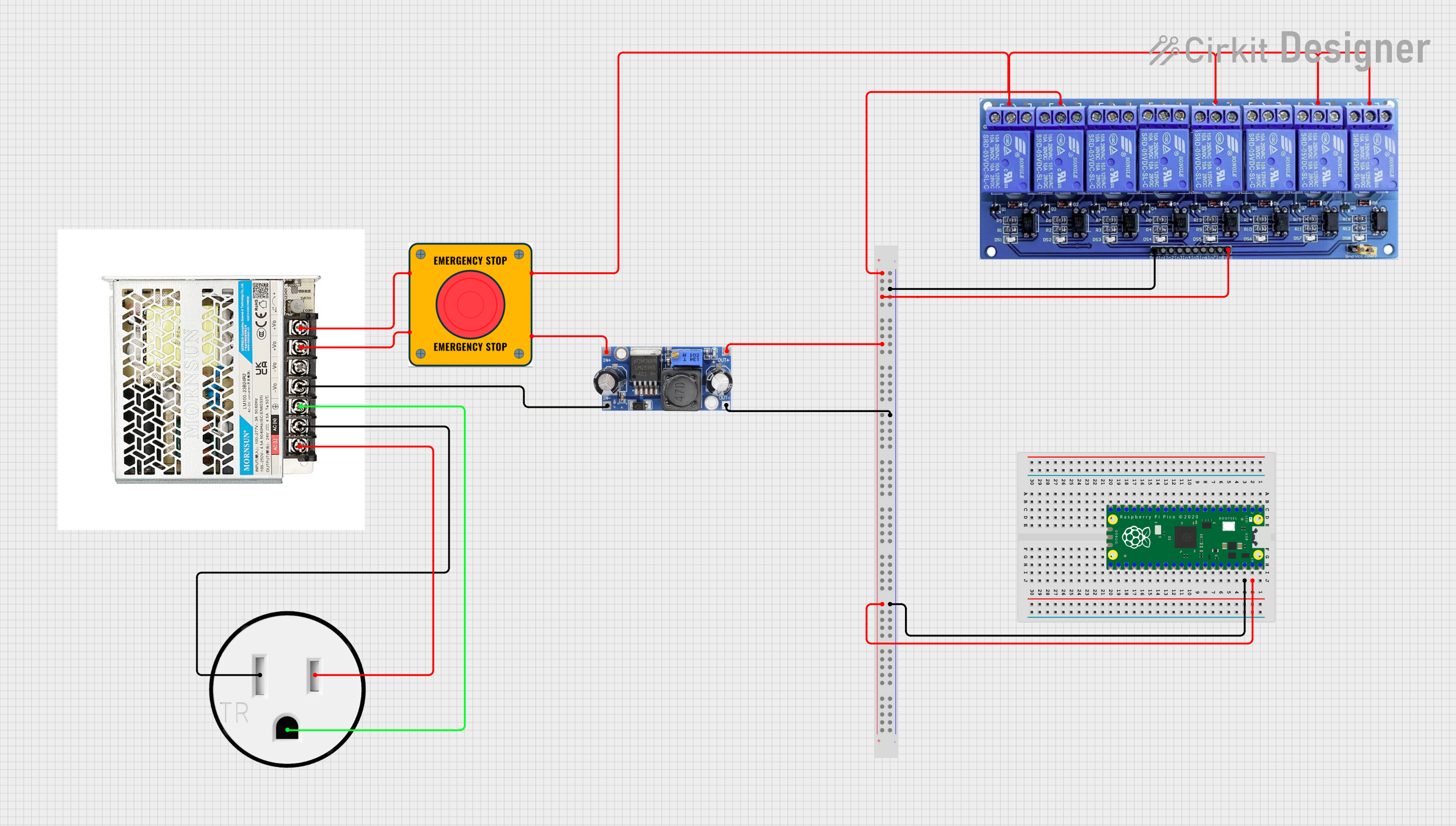
 Open Project in Cirkit Designer
Open Project in Cirkit Designer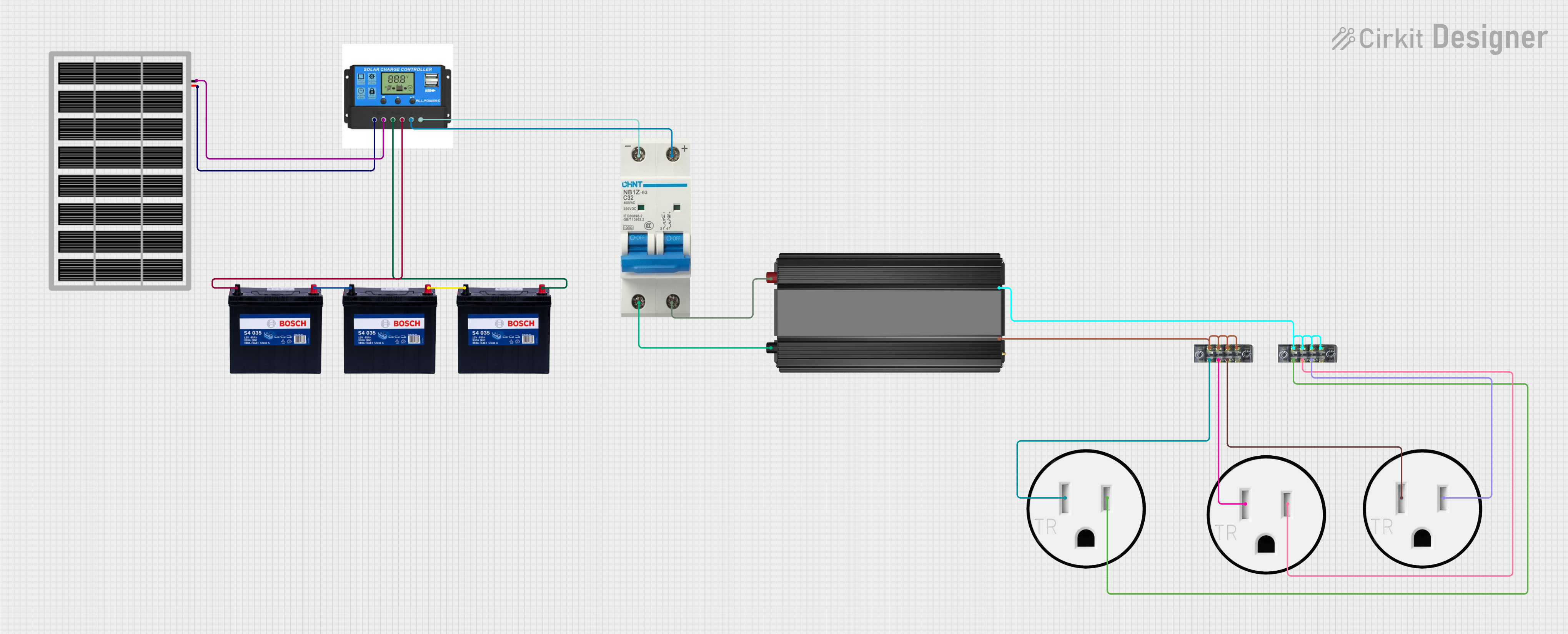
 Open Project in Cirkit Designer
Open Project in Cirkit DesignerExplore Projects Built with 120V 5-15P Panel Outlet

 Open Project in Cirkit Designer
Open Project in Cirkit Designer
 Open Project in Cirkit Designer
Open Project in Cirkit Designer
 Open Project in Cirkit Designer
Open Project in Cirkit Designer
 Open Project in Cirkit Designer
Open Project in Cirkit Designer